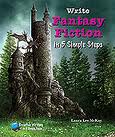Years ago, a young girl named Dodie played with her little sister and sled dog pups. In short chapters sprinkled throughout the book, her story is told.
Present day, twelve year old Tee, her father and younger brother, Jack are on an extended stay in Nome, Alaska. While Tee’s father is busy with research, she and a new friend, Quin, take walks enjoying the snowy scenery. They are repeatedly disturbed by an aggressive shadow of a ghost dog. At one point, a sudden blizzard traps the girls in a shack. The mysterious ghost dog leads the way to a long time resident, Dodie. Together the girls and Dodie put pieces of the mysterious puzzle together discovering the truth about the ghost dog and the death of Dodie’s little sister. Elizabeth Cody Kimmel creates an adventure with an intriguing mystery that demands the reader to get answers.

